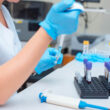After giving birth, many new moms wonder whether it’s safe to take hormonal birth control while breastfeeding. It’s a valid concern. Could these potent drugs affect breast milk, and if so, what impact would that have on a newborn?
When you turn to the internet, many of the top hits suggest hormonal birth control is completely safe for the breastfeeding mother and her newborn. Typically, the only meaningful caveat offered is that the mother should wait 3-6 weeks postpartum before taking any estrogen-containing birth control to reduce her risk of developing blood clots. Moms are additionally reassured that so long as they wait six weeks after giving birth to establish a solid milk supply, there should be no adverse effects for breastfed newborns.
In contrast, the World Health Organization (WHO) paints a less rosy picture about birth control use after childbirth. In one study, they noted that combined oral contraceptives (OCs) caused a significant decrease in milk output and total energy content as well as widespread changes in milk constituents [1]. They recommend waiting at least 42 days or 6 weeks, and even state that the disadvantages of using birth control likely outweigh any benefit for the first six months after giving birth [2].
Data on impacts of birth control use on breast milk is limited
A more accurate answer to the question of whether birth control use is safe while breastfeeding is: “we don’t know.” Here’s what we do know: since high-dose estrogen was previously given to suppress lactation in women who didn’t want to breastfeed, most doctors acknowledge that hormonal birth control containing synthetic estrogen can negatively affect the quantity of milk produced [3].
But what about changes in the quality of breast milk? A few studies have concluded that changes to the composition of breast milk were “generally within the normal range of values for healthy women” [4]. Other studies, like this one, collected breast milk from mothers who had begun taking hormonal birth control. While they were unable to detect any synthetic estrogen in the samples, they did detect it in women given a higher dose [5]. Therefore, the authors estimated that the breastfed infant of a mother taking 50 mcg of ethinyl estradiol (the synthetic form of estrogen found in hormonal birth control) would receive a dose of about 10 nanograms daily, or 10 billionths of a gram.
Just to recap, here’s what we know from the research:
- The synthetic steroids (particularly ethinyl estradiol) in birth control affect the quantity of milk production, perhaps especially if milk supply is not yet well-established.
- These drugs were shown to change the composition of breast milk, though researchers deemed those changes to be “within the normal range.”
- Other studies found synthetic estrogen to be undetectable in the breast milk of mothers who started the drug.
Declarations of safety often do not cite any research–and when they do, the data is old
So, where do the confident declarations of safety about the use of hormonal birth control while breastfeeding come from? Well, it’s hard to tell, because nobody really offers any citation to support their claims. Some websites link to a Planned Parenthood page, which simply states, “After 3 weeks, you can start any [birth control] method” without including any citations to support this statement.
I can only surmise that their idea of safety is extrapolated from the above studies that demonstrated no detectable steroids in breast milk, and changes to the composition that were deemed acceptable. But here, it is important to point out that all these studies are over 40 years old. Mothers deserve modern science proving that these drugs will do no harm to their children. Let’s look at another scientific discipline to understand why these measures fall short.
We can’t properly measure the amount of estrogen in breast milk
Traditionally, environmental scientists have measured water pollutants in parts-per-million. It was thought that anything less would be so diluted that it couldn’t possibly pose a threat to humans. However, in recent years, scientists have come to realize that synthetic estrogens are so potent that their negative impact can begin in levels as low as parts-per-trillion. All this time, they had been using a yardstick to measure a cockroach.
In fact, it’s even worse than that. The reality is they have no measuring device capable of detecting estrogen once it has already reached levels deleterious to our health. Picture dropping a pinch of salt into an Olympic-sized pool. That’s the amount of synthetic estrogen it takes to start causing trouble for vertebrates. Let’s take a look at a certain test case with fish, for example:
One of the ways scientists have overcome the limitations of their inability to adequately measure environmental estrogen levels has been to turn their attention to the most vulnerable species living in the waterways, and study the impact this undetectable estrogen was having on them.
In 2001, a group of researchers in Canada began adding the same synthetic estrogens contained in birth control to a test lake, maintaining a level of 5 to 6 parts per trillion. They observed almost immediate changes to the fathead minnow population in the lake. The male minnows began experiencing delayed sexual development. Within a year, the researchers were finding eggs in the testes of the male fish. The intersexualization of the male minnows eventually grew so dramatic over the course of the seven-year study, that the minnow population collapsed to the point of near extinction in the lake [6]. By isolating synthetic estrogen as the sole variable, the research team demonstrated the impact this steroid has on the environment (and its inhabitants!), even at levels impossible to measure.
“No evidence of harm” doesn’t give the full picture of birth control safety while breastfeeding
Of course, it would be unethical to suggest taking the same approach on human infants as the researchers did with their fish. We couldn’t, in good conscience, suggest experimenting with higher and higher doses of synthetic hormones to see if a mother’s use of hormonal contraceptives creates any negative consequences for her breastfeeding child. But isn’t that essentially what we do when we assure a young mother there is no harm without really knowing?
The American Academy of Family Physicians (AAFP) answered the question of safety regarding birth control and breast milk this way: “There is currently no evidence of harm: however, few patients have been studied and existing studies have many limitations. Therefore, it is not possible to definitively answer this question at this time” [7].
But we do have some evidence of harm to babies, and we didn’t even have to drop estrogen into a lake to find it. In the 1960s and 70s–that is, decades ago when researchers were still concerned about what effect these drugs might have on babies–there were several case studies of infants, baby boys and girls, developing bilateral breast enlargement when their breastfeeding mother was taking hormonal birth control [8][9]. The baby’s breast tissue generally returned to normal when the mother stopped breastfeeding. Of course, it’s important to note that the doses of synthetic estrogen in hormonal birth control from that era were much higher than they are now; again, this is precisely why newer research is needed.
Mothers deserve more solid evidence about birth control safety while breastfeeding
There is nothing more important to a young mother than her baby’s safety. That’s why it’s so frustrating that the accepted narrative surrounding birth control and breast milk safety is based on dubious, decades-old science. For modern sources that wish to remain intellectually honest, like the American Academy of Family Physicians, the best they can offer is “there is insufficient data.”
We can’t keep assuming that no damage is being done to newborns just because no one has bothered to measure the impact of birth control on breast milk in the past 40 or 50 years. Like so many of the concerns surrounding birth control, it’s time to question the narrative and the archaic science that has long given “the Pill” a pass. And it’s time for a new measuring stick.
References:
[1] World Health Organization (WHO) Task Force on Oral Contraceptives. Effects of hormonal contraceptives on breast milk composition and infant growth. Stud Fam Plann. 1988;19(6 Pt 1):361-369. [2] World Health Organization (WHO). Medical Eligibility Criteria for Contraceptive Use. 5th ed.: 2015. Retrieved April 20, 2022, from https://www.who.int/publications/i/item/9789241549158 [3] Louviere RL, Upton RT. 1975. Evaluation of Deladumone OB in the suppression of postpartum lactation. Am J Obstet Gynecol, 121(5), 641-2. doi: 10.1016/0002-9378(75)90466-4. PMID: 1090174. [4] Lönnerdal B, et al. 1980. Effect of oral contraceptives on composition and volume of breast milk. Am J Clin Nutr, 33 (4), 816-24. doi: 10.1093/ajcn/33.4.816. PMID: 7361700. [5] Staffan Nilsson, et al. 1978. Ethinyl estradiol in human milk and plasma after oral administration. Contraception, 17 (2), 131-139. ISSN 0010-7824,https://doi.org/10.1016/0010-7824(78)90069-0.
[6] Kidd, Karen et al. Collapse of a fish population after exposure to synthetic estrogen. PNAS, 104(21), 8897-8901. https://doi.org/10.1073/pnas.0609568104 [7] Guthmann, Richard A et al. 2005. Combined Oral Contraceptives for Mothers Who are Breastfeeding. Am Fam Physician, 72 (7), 1303-04. Retrieved April 20, 2022 from https://www.aafp.org/afp/2005/1001/p1303.html [8] Curtis, E M. 1964. Oral-contraceptive feminization of a normal male infant: report of a case. Obstetrics and gynecology, 23, 295-6. PMID: 14117345 [9] Marriq, P, and G Oddo. “La gynécomastie induite chez le nouveau-né par le lait maternel? Un accident rare des contraceptifs oraux” [Letter: Gynecomastia in the newborn induced by maternal milk? An unusual complication of oral contraceptives]. La Nouvelle presse medicale vol. 3,41-43 (1974): 2579. Accessed April 20, 2022 from https://pubmed.ncbi.nlm.nih.gov/4467130/Additional Reading:
Can birth control use affect future lactation?
3 Simple Tips to Limit Endocrine Disruptors and Balance Hormones Naturally







